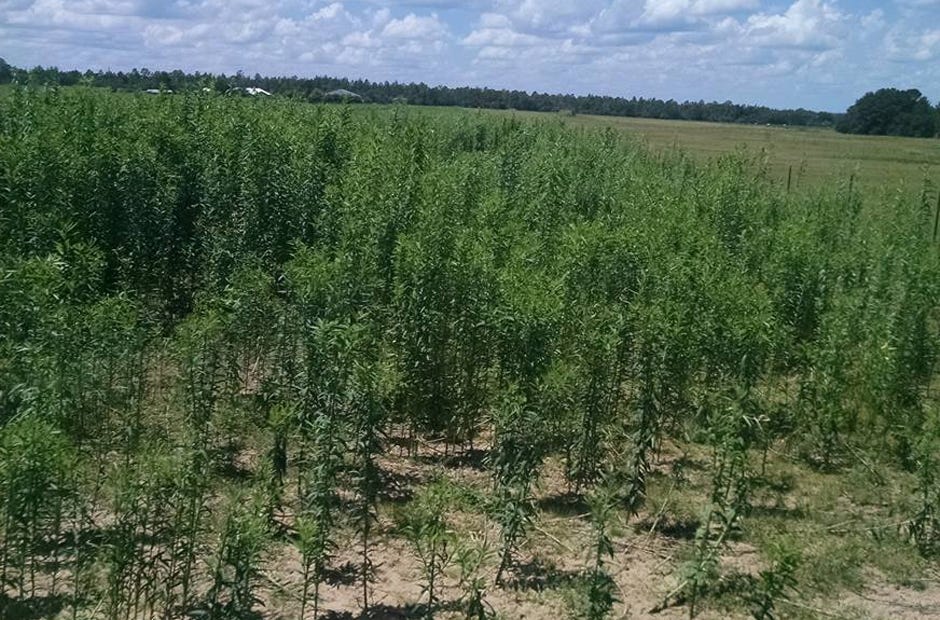![Sunn hemp can function as forage for livestock. [SPECIAL TO THE NEWS BULLETIN]](http://127.0.0.1/wordpress/wp-content/uploads/2022/01/ghows-DA-6b3a4645-1a6f-61a6-e053-0100007fdeb0-977e3457.jpeg)
Sunn hemp is not related to industrial hemp or marijuana. It is actually in the genus Crotalaria but it is not toxic to livestock like Crotalaria spectabilis.
Sunn hemp is a fast growing, warm season annual legume. It grows 6-7 feet tall and can tolerate a wide range of soil pH levels (5.0-8.4). The legume is native to India and Pakistan.
The University of Hawaii and the U.S. Department of Agriculture Natural Resource Conservation Service worked together to release the variety called Tropic Sun in 1982. This variety only makes seed during periods of short day length and with proper temperatures, which limited seed production.
Recently, Auburn University released AU Golden and AU Darbin that are able to produce seeds in more temperate climates.
Since sunn hemp is a legume, it fixes more than 120 pounds of nitrogen from the environment per acre per season. It can yield 3,000 to 10,000 pounds of forage per acre. Also it grows in low-fertility soils and fertile soils. These qualities caused us to evaluate it as a forage for livestock as well as using it as a cover crop and wildlife food plot.
The advantages of using sunn hemp as a cover crop are the large amount of biomass produced per acre, nitrogen fixation, nematode suppression and weed suppression.
Because it grows well in low fertility situations and low pH, hunters have used it for wildlife food plots. We have found that it is an acquired taste but high in crude protein (CP) and total digestible nutrients (TDN).
Sunn hemp is an interesting option for livestock warm season annual grazing. The leaves are 25-30 percent CP, with TDN of 65-71 percent. The stems are much lower quality at 8-10 percent CP and 22 percent TDN. Grazing and forage management should focus on maximizing leaf-to-stem ratio.
Plant sunn hemp once soil temperatures have reached 65 degrees Fahrenheit. Use a seeding rate of 25-30 pounds per acre and planting depth of 1/4 of an inch to one inch.
Don’t forget the cowpea type inoculant. Soil test for phosphorus and potassium prior to planting and apply these nutrients based on the sample results. Start grazing at 1.5-3 feet tall and stop grazing at 1-1.5 feet tall.
Because of its high quality, sunn hemp works when limit grazed (1-3 hours/day), along with grazing perennial pastures.
Seeds contain small amounts of alkaloids, so they s should not be part of livestock diets. Small amounts consumed while grazing are not enough to cause acute toxicity. The leaves and stems are not toxic to livestock.
Contact me at bearden@ufl.edu or 850-689-5850 for more information on sunn hemp as a forage.
Jennifer Bearden is an agent at the University of Florida's Institute of Food and Agricultural Sciences Extension office in Crestview.

This article originally appeared on Crestview News Bulletin: The many uses of sunn hemp
